Earlier this month, the Australian Bureau of Statistics (ABS) released its 2019-20 Australian System of National Accounts (ASNA), which provided a detailed presentation of annual national accounts data.
Locked away on Table 61, the ASNA confirmed that, at a national level, the land values underpinning the Australian house prices rose strongly when measured against GDP.
The release of the annual state accounts by the ABS has enabled me to calculate residential land values as a percentage of gross state product (GSP), which provides a measure of over/under valuation.
As shown in the next chart, residential land values to GSP rose across most states and territories in the year to June 2020. NSW (+9%), VIC (+9%) and QLD (+8%) led the rise with national land values also rising by 6% when compared against GDP:
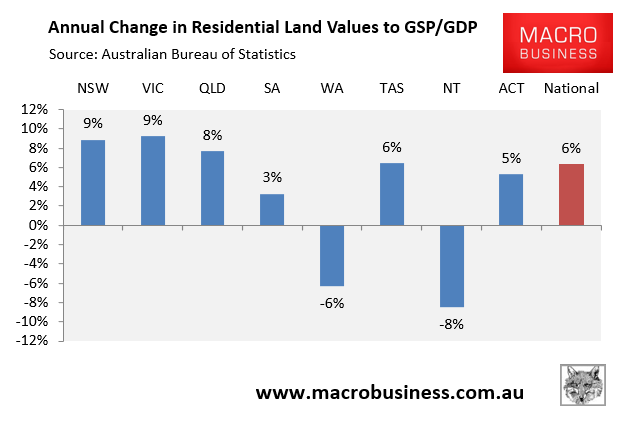
Looking at the time series, land values in 2019-20 were still an expensive 3.12 times GSP in NSW and 2.98 times GSP in VIC, way above the 2.49 times GDP nationally:
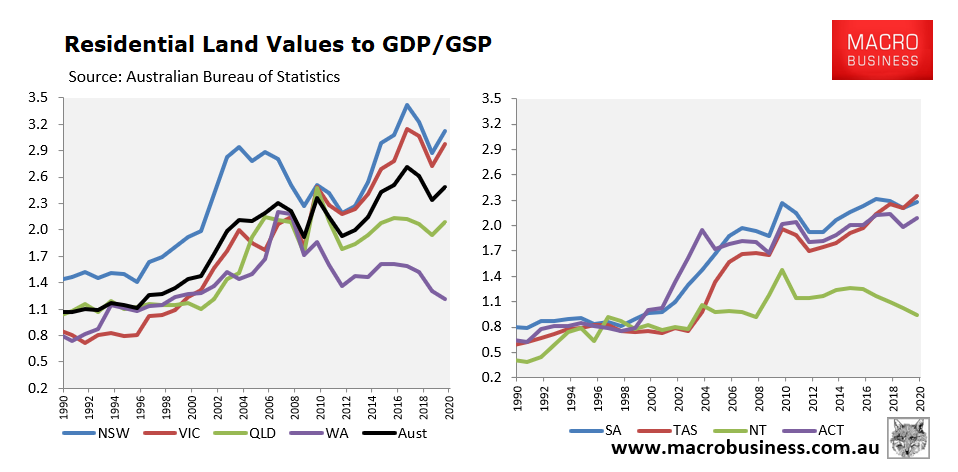
Similarly, when compared against Household Gross Disposable Income, residential land values in 2019-20 were still an expensive 5.12 times in NSW and 4.75 times in VIC, way above the 3.77 nationally:
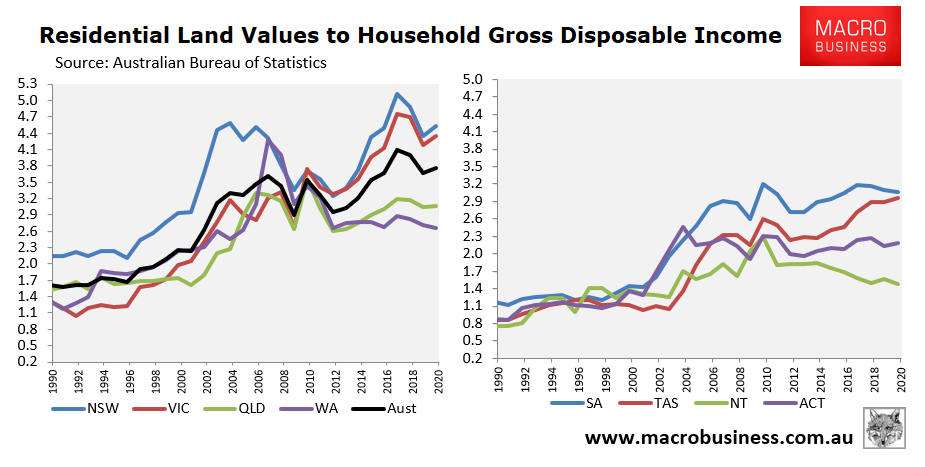
Moreover, as part of its quarterly house price release, the ABS includes a time series going back to September 2011, which contains the values of the housing stock broken-down by state/territory. The next chart compares these values as at June 2020 against their respective GSPs/GDP:
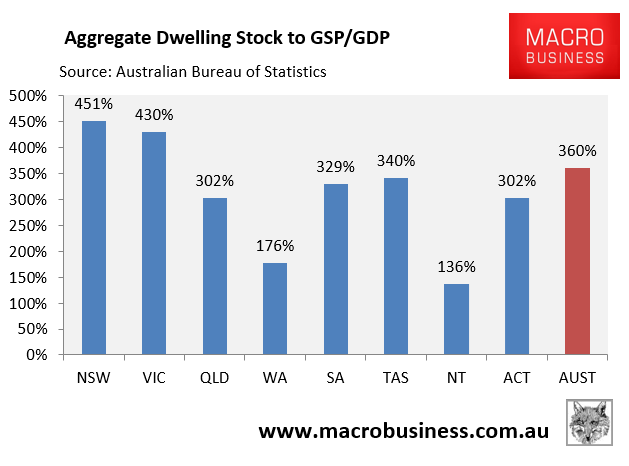
And here’s the same dwelling values data measured against gross household disposable income:
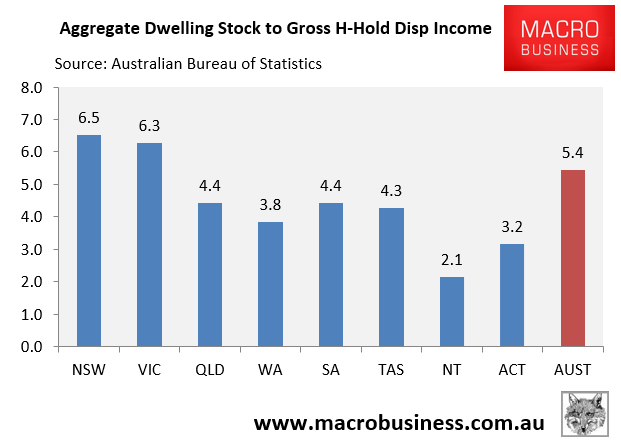
New South Wales’ and Victoria’s (read Sydney’s and Melbourne’s) obviously dominate Australian housing valuations.
Indeed, these two markets combined account for 68% of Australia’s dwelling stock by value, well above their 58% share of Australia’s population:
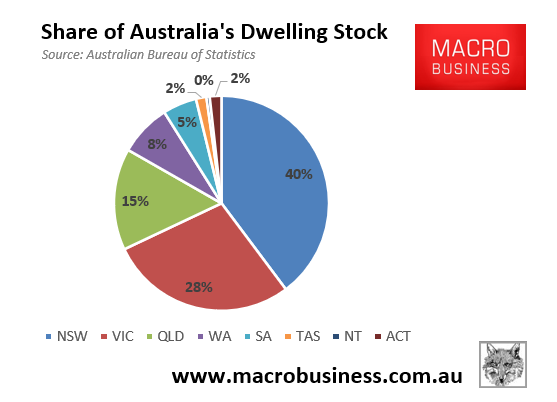
When it comes to Australian property there’s Sydney and Melbourne, and then there’s everything else.

